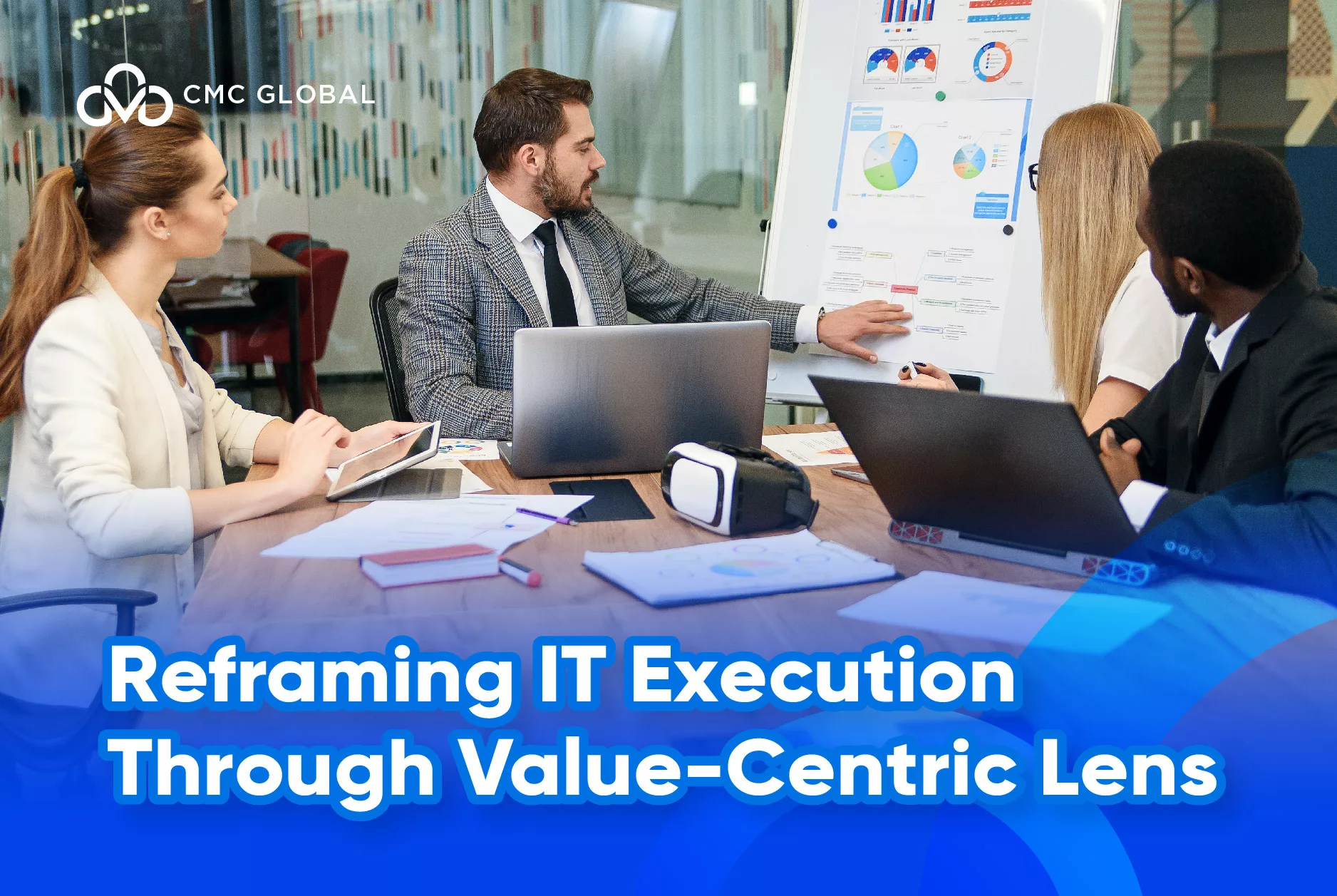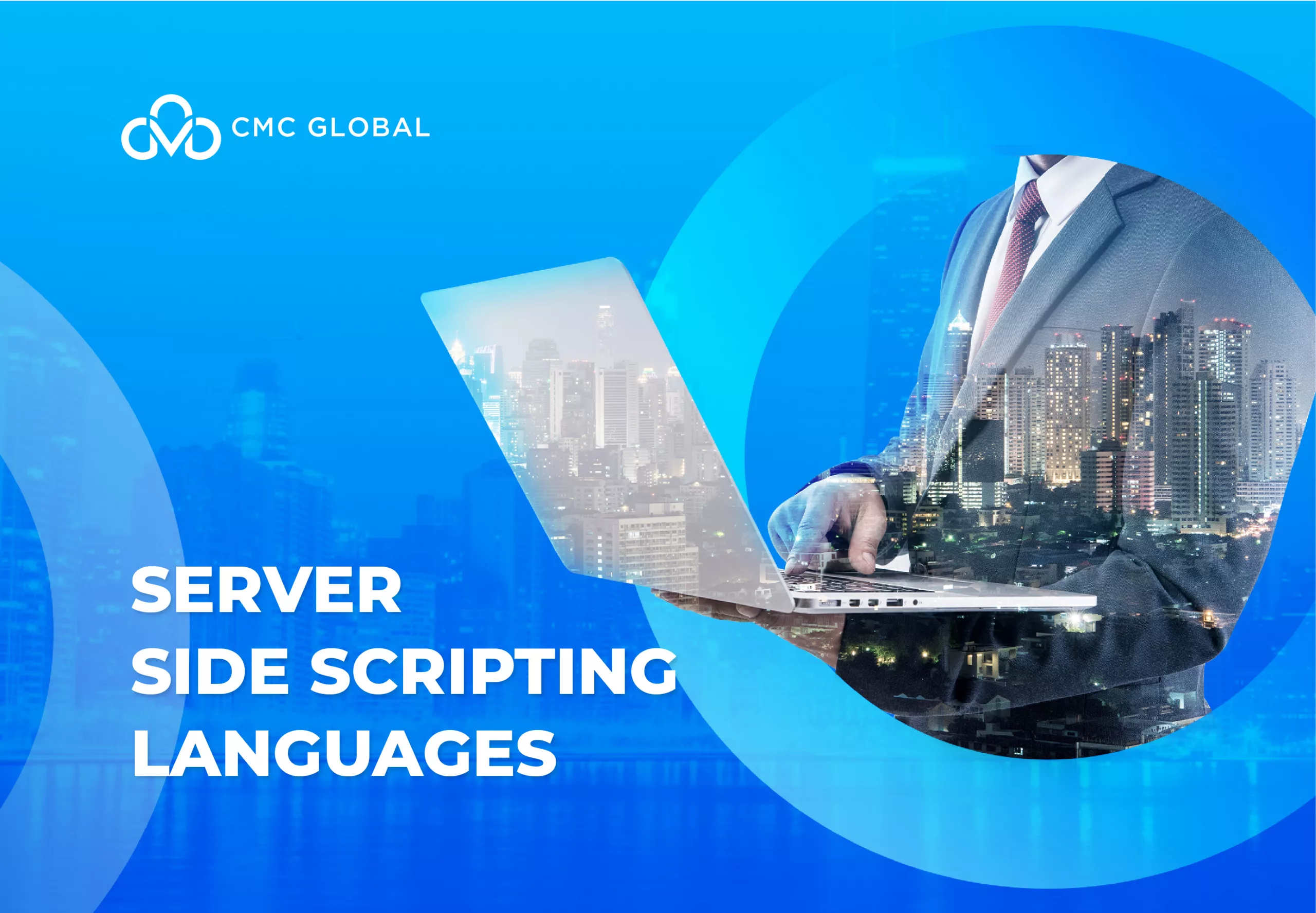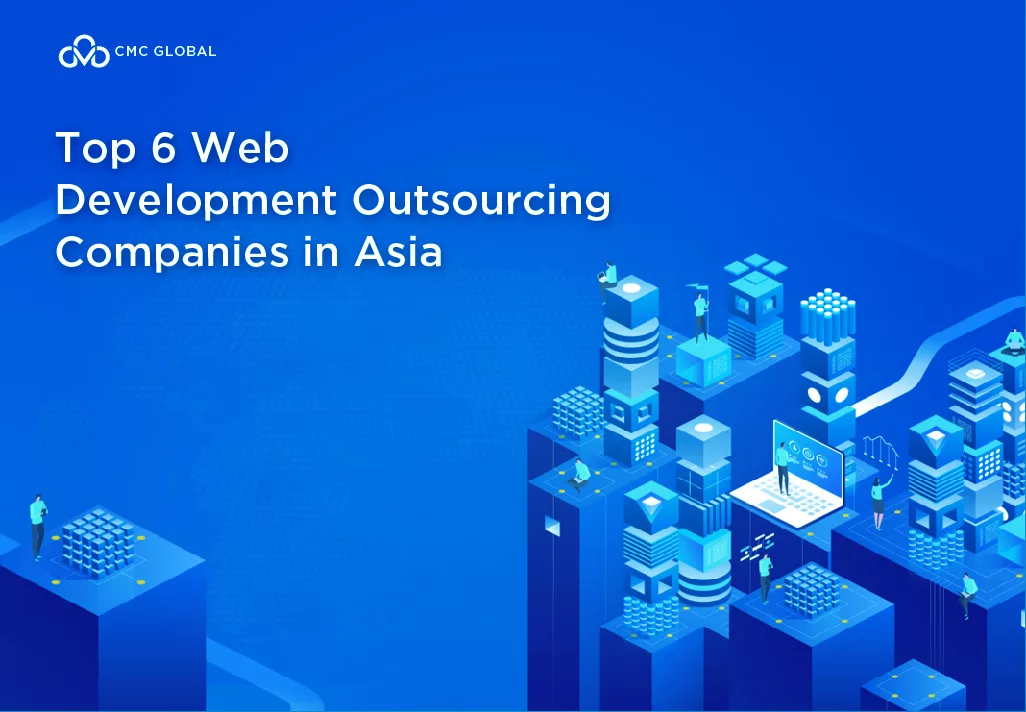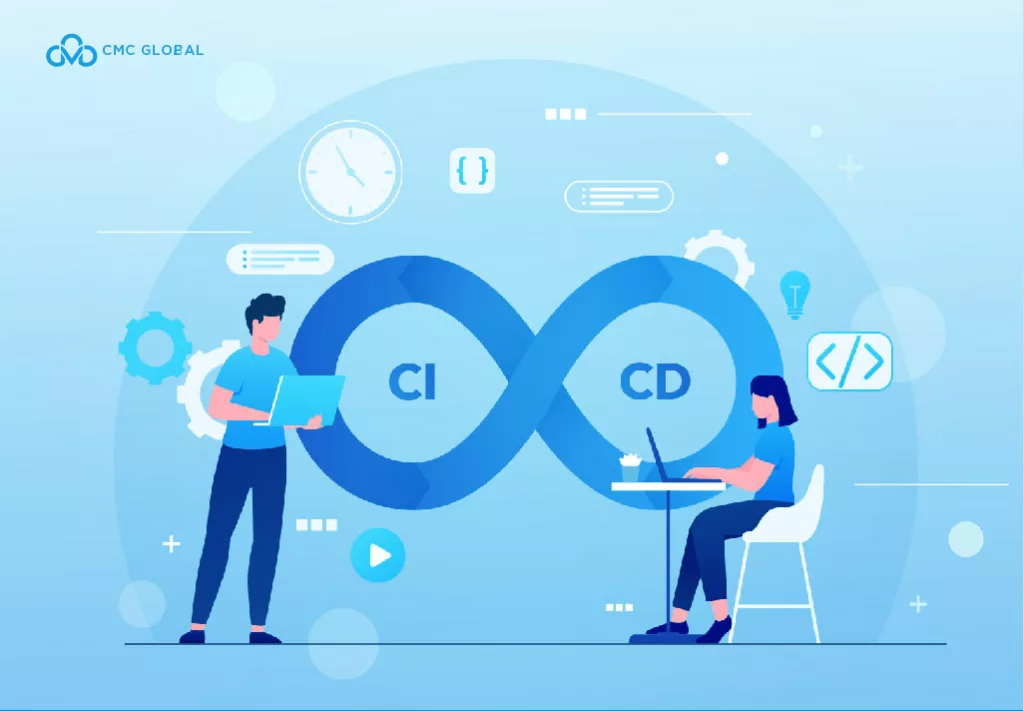Business Transformation: The New Core Driver of Outsourcing
Whitelane Research’s 2025 IT Sourcing Study for the UK and Ireland, based on insights from nearly 400 of the region’s largest IT spenders, highlights a clear trend: business transformation has overtaken cost savings as the main reason companies outsource. 59% of organizations cite transformation as their primary motivation, followed by scalability (52%) and access to innovation (50%).
This signals a major shift in how enterprises view outsourcing—from a tactical cost‑cutting exercise to a strategic partnership model focused on driving growth and innovation. To achieve this, organizations need vendor management approaches that emphasize value creation, agility, and outcome alignment, rather than rigid compliance and control.
Traditional PMO governance, centered on cost and delivery oversight, cannot deliver the adaptability or insight required in today’s transformation‑driven environment. Enterprises must adopt value‑driven vendor assessment and agile management practices that link every partnership directly to measurable business results and long‑term strategic impact.
When Governance Becomes a Barrier to Value
The Strategic Cost of the Skills Gap
The shortage of skilled talent is now the single largest obstacle to business transformation, with 63% of employers identifying skill gaps as a major barrier. The challenge is compounded by the rapid adoption of AI; despite the fact that advancements in AI and information processing are highly transformative, 74% of companies struggle to achieve and scale AI value due to integration barriers and a lack of organizational readiness. A governance-heavy PMO approach cannot solve this, as it is designed for monitoring efficiency, not cultivating risk-aware innovation and strategic capability building.
Siloed Vendors and Misaligned Metrics
A PMO’s transactional focus often reduces IT Partners to mere executors, preventing them from serving as strategic advisors. In a multi-vendor environment, this leads to silos, conflicting Service Level Agreements (SLAs), and a fundamental misalignment of priorities. The PMO measures success by project timelines and cost adherence, but these metrics rarely reflect real business value or customer impact. The true cost is stagnation, with 54% of IT professionals citing a lack of expertise as a major barrier to successful digital initiatives.
Transitioning to the Agile Value Management Office (VMO)
The mandate for C-level executives is to shift the focus from cost management to value maximization. The answer lies in establishing an Agile Value Management Office (Agile VMO).
The VMO: A Strategic Pivot from Outputs to Outcomes
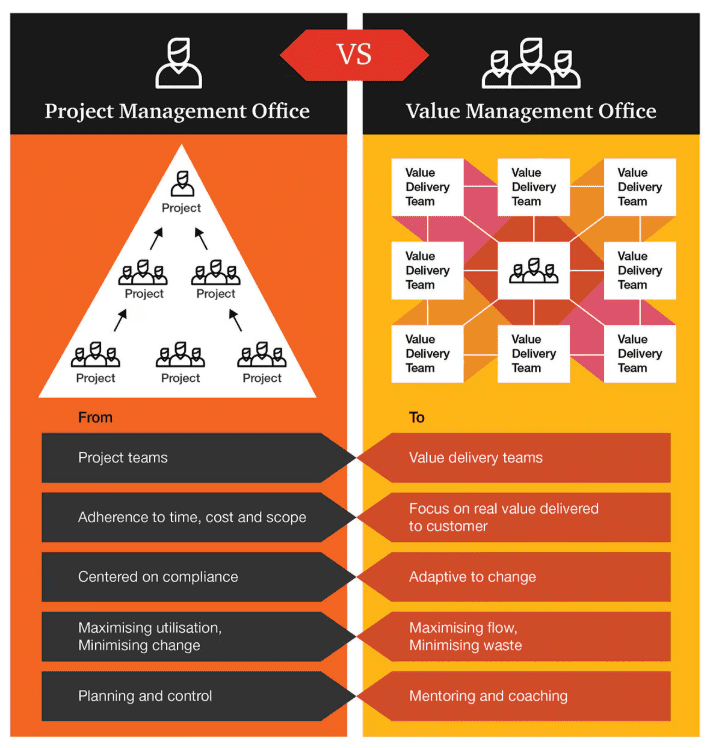
An Agile VMO is a paradigm shift in how an organization approaches its strategic execution and governance. It moves beyond the PMO’s tactical oversight to focus on continuous value delivery, strategic alignment, and adaptive planning.
Strategic Alignment: The VMO uses frameworks like Objectives and Key Results (OKRs) to ensure that every deliverable—regardless of which external IT Partner provides it—is aligned with clear, measurable outcomes tied directly to overarching business goals.
New Value Roles: The VMO structure elevates the partnership by incorporating roles focused on Customer Engagement and Innovation and Improvement roles to drive value creation and measured performance beyond contractually required metrics.
Dynamic Planning: The VMO replaces rigid, static annual plans with continuous, dynamic planning cycles (such as quarterly adjustments), enabling your business to pivot quickly in response to market changes and adopt cutting-edge technologies faster.
The VMO’s Value-Based KPI Framework
To ensure consistent value delivery, the Agile VMO demands a new set of metrics that look beyond traditional Cost Per Unit and SLAs:
| Strategic Value Area | VMO-Driven KPI | Why it Matters |
| Financial Outcomes | Return on Investment (ROI) | Measures long-term financial returns and indirect benefits like quality improvements and faster speed to market. |
| Agility & Innovation | Time to Market (TTM) and Lead Time for Changes | Measures the time from a feature request to production deployment, indicating the agility and responsiveness of the IT Partner. |
| Partnership Stability | Employee Turnover Rate (at the vendor) | High turnover is a direct threat to project knowledge and dependable support, ensuring the focus is on a stable, long-term IT Partner. |
| Customer-Centricity | Net Promoter Score (NPS) / Customer Satisfaction (CSAT) | The ultimate measure of the end-user experience, prioritizing the qualitative impact over mere technical compliance. |
Making the Shift: From Traditional PMO to Value Management Partnerships
Moving to an Agile VMO model requires more than a process change—it calls for a new mindset in how organizations work with their technology partners. Successful transformation depends on cultivating long-term, value-driven relationships that focus on measurable outcomes rather than transactional outputs.
IT providers and client organizations must collaborate closely to close skill gaps, ensure delivery consistency, and align every initiative with strategic business goals. A value management approach emphasizes continuous improvement, shared accountability, and transparent measurement through KPIs that reflect real business impact.
Enterprises that adopt this partnership model are better equipped to scale innovation, integrate AI, and maintain agility in the face of rapid change—turning offshore engagements into engines of growth and resilience.
Ready to move beyond governance and start building value-driven partnerships?
Contact us to discuss how to establish a value management model with your global IT partners.
